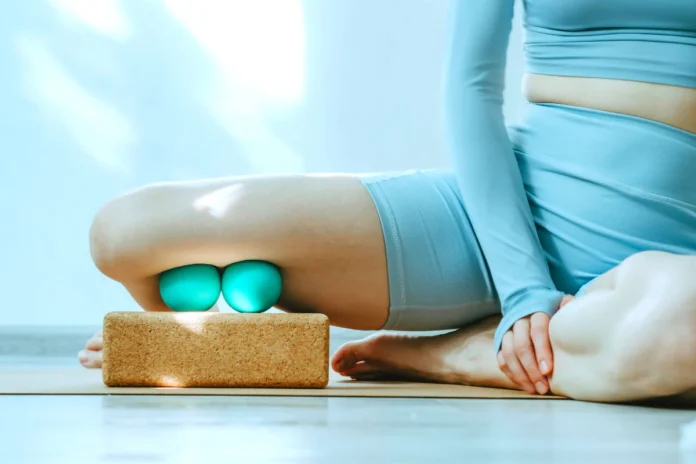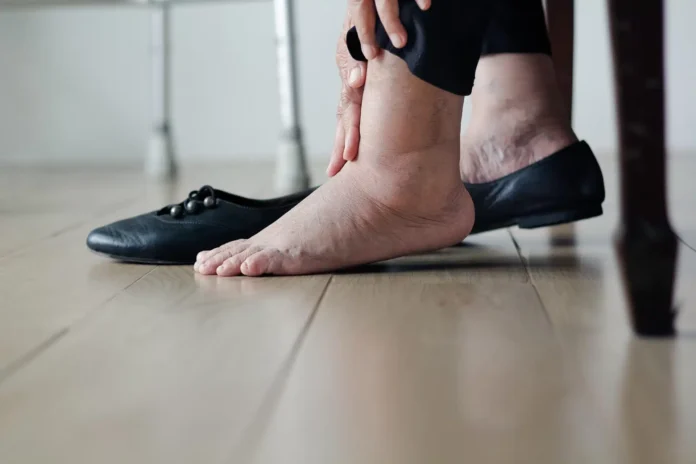Hectic schedules full of work, errands and obligations often keep us on our feet all day. Maintaining comfort and avoiding pain or fatigue requires being strategic across multiple facets of daily routines. From thoughtful footwear decisions and ergonomic desks to regular movement and self-massage, a multi-pronged approach enables you to withstand the demands of busy days.
Choose Footwear for All-Day Wearability

Few things derail productivity faster than distracting foot or heel pain, yet many default to fashion over function with shoes. The right footwear provides support for extended wear without rubbing, pinching or loss of traction. For professional settings, the people at Birdies recommend leather loafers or ballet flats with slight heels adding polish while retaining slip-on convenience.
Searching out styles with moisture-wicking linings prevents sweaty discomfort. Flexible rubber soles with textured tread enable confident strides across various surfaces. Look for padded insoles accommodating orthotics or gel inserts for customized comfort. Athletic sneakers also work for casual offices. Simply slipping into a well-made pair in the morning keeps you striding pain-free for hours.
Correct Ergonomic Workstation Misalignments
It takes just minutes hunched over computers in awkward positions to manifest chronic back, neck, and shoulder pain. Combat poor ergonomics by first adjusting monitor placement for comfortable viewing without excessive leaning or straining. These micro-misalignments may seem harmless at first, but they accumulate tension and fatigue quickly, especially during long hours of computer use.
The key is to create a setup that allows your body to remain in a natural, relaxed posture throughout the day. That means everything from your screen to your seat needs to support—not stress—your spine and joints.
Here’s how to fix common workstation alignment issues:
- Adjust monitor height so the top third of the screen is at eye level. This prevents chin jutting or downward neck tilt, both of which strain cervical vertebrae.
- Position keyboard and mouse directly in front of you, not off to the side. Wrists should stay flat, and elbows should form a 90-degree angle.
- Use a chair with lumbar support or place a small cushion in the lower back area to maintain the spine’s natural curve.
- Keep feet flat on the ground or on a footrest. Avoid crossing legs for extended periods, which can affect circulation and hip alignment.
- Sit with thighs parallel to the floor, and adjust seat height to avoid pressure under the thighs that can reduce blood flow.
- Place frequently used items within arm’s reach to avoid excessive twisting or reaching, which can strain shoulders and spine.
- Tilt the keyboard slightly (or use a split keyboard) if you experience wrist pressure—this helps keep wrists in a neutral position.
Adding brief stretches between tasks also helps restore balance to overused muscles. Just two minutes of movement—like shoulder circles, side bends, or standing spinal twists—encourages circulation, improves posture, and resets tension before it escalates. Over time, these micro-adjustments and intentional movements make a big difference in long-term comfort and injury prevention.
Schedule Short Micro-Movement Breaks
Prolonged sedentary behavior inevitably exhausts the body physically. Set reminders to briefly pause static positioning every 45-60 minutes if able. Use these short intermissions for micro-bursts of revitalizing movement. Stroll to the farthest bathroom or kitchenette for extra steps. Three-to-five minutes of light calisthenics or yoga poses get blood pumping.
The unavoidable daily inertia can be combatted by increasing opportunities for movement. Even subtle fidgets like calf raises, toe taps and shoulder rolls while seated rest weary muscles. Micro-movement breaks also represent chances to correct unaligned postures before they manifest as tension or soreness.
Practice Self-Massage Techniques

Despite the best efforts, muscle knotting or dull aches occasionally persist from extended sitting or repetitive gestures. Several easy self-massage techniques administered throughout the day relieve mild-to-moderate discomfort at the source. Neck and shoulder stiffness respond especially well to self-massage conveniently performed seated.
Use fingertips to isolate and compress tight trapezius muscles in small circles down each side of the neck out to the shoulders. Applying pressure while continuously exhaling often provides noticeable relief in hard to reach spots. For wrist and forearm strain from extensive mousing, stretch arms straight out with palms up. Gently pull each finger back, feeling the stretch down through the forearms. Simple self-massages get blood circulating to alleviate tension fast without tools.
Listen to Your Body’s Signals
Physical, mental and emotional stresses accumulate gradually and are easy to overlook amid busy schedules. Yet minor signals ignored turn into major issues disrupting productivity and wellbeing. So stay present to bodily cues urging seated position changes, mini-break movement or self-care moments. Your body communicates before reaching critical discomfort levels – if you listen.
Smart Clothing Layering Tips for Temperature Control
Temperature changes throughout the day—especially between indoor and outdoor environments—can strain your comfort without you noticing until discomfort sets in. Wearing smart, adjustable layers allows you to adapt quickly and keep your internal body temperature regulated without added stress or sweating.
Tips for effective layering:
- Base layer: Choose breathable, moisture-wicking fabrics like cotton blends or bamboo.
- Middle layer: Add a light cardigan or fleece that retains warmth without bulk.
- Outer layer: Opt for a structured blazer or jacket you can remove easily in warmer spaces.
- Accessories: Scarves or compression sleeves provide both temperature and joint support.
- Avoid extremes: Too many thick layers cause overheating just as much as underdressing leads to chills.
Layering not only supports temperature control—it reduces muscle tension that builds when your body tries to adapt on its own.
Hydration Habits That Support Physical Ease
Comfort isn’t just physical—it’s physiological. Staying hydrated improves everything from joint lubrication to muscle elasticity and mental clarity. Yet, many people forget water until symptoms of dehydration, like stiffness or fatigue, surface.
Simple hydration recommendations:
- Start your day with a full glass of water to counteract overnight dehydration.
- Keep a visible, reusable bottle on your desk to encourage steady sipping.
- Flavor your water with lemon or mint if plain water isn’t appealing.
- Eat water-rich foods like cucumbers, oranges, and leafy greens during lunch.
- Use hydration reminder apps or set phone alarms to reinforce consistency.
Hydration doesn’t just refresh—it supports your body’s mechanical systems for smoother movement and greater stamina.
Evening Recovery Rituals to Extend Comfort
The comfort of your next day begins the night before. Establishing gentle recovery habits helps your body restore after long hours on your feet or at a desk.
Top evening recovery steps:
- Elevate your feet for 10–15 minutes to reduce swelling and promote circulation.
- Soak in warm water with Epsom salt to ease tension in feet, calves, and back.
- Use a foam roller on your legs or upper back to break up lactic acid.
- Do a short stretch routine focused on the hamstrings, neck, and shoulders.
- Avoid screens 30 minutes before bed to wind down your nervous system properly.
Consistently prioritizing gentle restoration helps reduce long-term strain and makes you more resilient.
Simple Footwear Comparison Table
| Footwear Type | Best For | Key Features | Considerations |
| Leather Loafers | Office & daily wear | Supportive heel, professional look | May require breaking in |
| Athletic Sneakers | Casual or long days | Cushioning, flexible sole | Less formal |
| Ballet Flats | Light activity or travel | Moisture-wicking, slip-on ease | Less arch support |
Conclusion

Maintaining daily comfort enables making it through schedules full of obligations without pain or fatigue hindering productivity. From supportive footwear and ergonomic tweaks to frequent micro-movements and self-massage, small adjustments prevent major problems. Most importantly, listen to the wisdom of your body urging restorative self-care. Add evening recovery habits and hydration awareness to your routine, and you’ll not only prevent discomfort—you’ll thrive. Sustainable comfort is a lifestyle, not a luxury.
FAQ Section
- How do I know if my shoes are actually causing discomfort?
If you regularly feel foot, knee, or lower back pain after walking or standing, your shoes may lack proper support or alignment. - What’s the easiest way to improve my desk ergonomics without buying new furniture?
Adjust your monitor height with stacked books, and use cushions or rolled towels for lumbar support if needed. - How often should I stretch during the workday?
Ideally, take 2-3 minutes to stretch every hour, especially after prolonged sitting or standing still. - Is drinking coffee enough to stay hydrated during a busy day?
No—caffeinated drinks can dehydrate you. Balance with water and hydrating foods throughout the day. - Do I need professional massage tools to relieve tension?
Not necessarily. Simple hand techniques, stretching, and foam rollers are highly effective for everyday relief.







